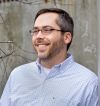The Many Instruments of Sierra Hull: How Transferrable Skills Are Redrawing the Boundaries of Her Sound
She made her name on mandolin in the bluegrass scene, but Hull's six-string skills have been there the whole time.

Saying Sierra Hull is only a mandolin player is selling the 29-year-old singer, songwriter, and multi-instrumentalist short. But it probably wouldn’t hurt her feelings.
After all, mandolin is the instrument that brought her to the Grand Ole Opry stage at the age of 10 and Carnegie Hall two years later, and helped her land a record deal before she could drive a car.
However, mandolin is only part of the story. Guitar, especially, has been in the mix on songs like the multi-instrument workout “Hullarious” on her Rounder Records debut, Secrets, released in 2008 when she was 16.
But as Hull evolved from straight bluegrass with her Grammy-nominated, Bela Fleck–produced 2016 release, Weighted Mind, she adopted a more experimental approach that showcased her mandolin playing and songwriting with little additional accompaniment.
“It was an amazing experience to strip everything back and be in this totally exposed setting as a musician,” Hull says. “I knew I didn’t want to make the same record again, and I was excited about the idea of incorporating more things back into the aesthetic of the music.” On 25 Trips, her new album, Hull reconnects with her six-string acoustic on tracks like “Ceiling to the Floor” and “Everybody’s Talking.”
When she brings in the full band, however, Hull’s experiments with instruments like tenor guitar, mandola, and baritone and octave mandolin take flight, as session players – including Ron Block from Alison Krauss’s band, and flatpicker Bryan Sutton – fill in on guitar. Like bluegrass musicians taking turns at the mic, stepping aside is part of the process.
“The exciting thing about recording like that is you can sit around and dream up what you think something’s going to be like,” she says. “But when you’re inviting someone else into that experience, they’re inevitably going to bring things that you never thought of. You never know what somebody else is going to bring to the table. That’s exciting.”
All the latest guitar news, interviews, lessons, reviews, deals and more, direct to your inbox!
Like most working musicians, Hull has been off the road due to the pandemic. And as Guitar Player discovered, during her downtime she’s been reaching for her guitars more than ever.
You’re an accomplished multi-instrumentalist. Where did you begin?
I always say mandolin was my first instrument, though I was actually given a fiddle for Christmas right before that. I was really tiny at the time, and I couldn’t reach very far with my left hand. So my Dad showed me my first tune on the mandolin, and I just fell in love.
It was almost like an immediate connection. I picked up guitar about a year later. I never had lessons on guitar, but I was around guitar players at jams, so it felt like a natural thing to pick up a guitar, as well. I think a lot of the techniques are similar between flatpicking guitar and mandolin.
How has playing mandolin influenced your approach to guitar?
I think that as you develop certain personalities within music, it inevitably shifts over. I’ve spent years studying mandolin players, learning from heroes. But I also spent a lot of time learning Tony Rice’s stuff on guitar when I was kid, or from guitar players like Ron Block and Bryan Sutton.
I think you learn some of the vocabulary through studying great players. But just the general technique of left- and right-hand facility, in terms of pick hold and tone, are pretty interchangeable from mandolin to guitar.

Coming from the mandolin, what is your picking technique? Do you anchor or play with a closed fist?
That’s interesting, because when I picked up the mandolin and learned my first tune, I didn’t anchor at all. I started taking a few mandolin lessons, and the teacher would anchor with his pinkie and ring finger and have his hand up the neck a little bit so he’s getting more of a mellow tone. And then you watch somebody like Tony Rice play, and he anchors.
When I started working on more crosspicking things, I would get tired when I would anchor with my pinkie because you use a little more of your upper arm when you anchor like that, as opposed to playing close-handed and having your hand in a fist.
At some point, without realizing it, I would switch to a closed-handed position just for a couple of songs in a set. Before I knew it, I actually started playing more and more stuff that way. And I find with guitar I can go back to that anchored position more often than not. It’s been really fun to get back into guitar in the last couple of years and realize how some of my techniques have changed since I was younger.
It’s been really fun to get back into guitar in the last couple of years and realize how some of my techniques have changed since I was younger
For Weighted Mind, you took more of solo approach. How did you move forward to work with a band on 25 Trips?
Weighted Mind felt like a very singer-songwriter-forward album to me, but it also ended up being maybe the most instrumentally forward album that I’ve done. There was more musical responsibility in some ways, or a different kind of a responsibility, than when you’re playing in a band setting, where other instruments are filling out certain sonic space.
That record opened me up to explore the idea of how to create the illusion of more: How can you get more music out of one instrument than just playing rhythm through the whole thing? And also how to incorporate some of my own bass lines into my playing and be able to play rhythmic-sounding stuff while also making sure that the coloration feels full in the song. I feel like that carried over to 25 Trips.
On 25 Trips, you roam among guitar and mandolin, tenor guitar, octave mandolin, and mandola. What makes you lean toward those variations?
I love the inspiration of picking up a different instrument. A few days ago, I pulled out an archtop guitar I have, and it was in an open tuning. I started messing with tuning the E string down, and it broke, but I played it anyway.
And as silly as it sounds, it was really fun to have this different, five-string musical experience. Sometimes things like that happen where you didn’t necessarily plan to use a particular instrument, but you have it in your hand at the moment that some idea or creative energy hits.
You’ve been posting videos pretty regularly, including a short guitar piece called “Unfamiliar Times.” Was that inspired by the pandemic?
Yes. I played my last show on March 12, I think. The next day I came home and realized I was going to be there a while. My record came out right at the beginning of all this, so my album release tour was canceled.
I went from thinking I was going to not be home at all for the next couple of months to suddenly being home, and there was both a sadness and a beauty in it – a sadness for all the things that were happening and all the people’s lives who had been negatively affected, but also a strange opportunity to just be home, and I think there has been beauty in that. “Unfamiliar Times” just kind of fell out the next day.
I think sometimes our circumstances inspire something almost immediately like that. It definitely was how I was feeling in that moment.
Have you been playing more guitar since you’ve been home?
I have, yeah. I got a Bourgeois guitar early last year. It’s a smaller guitar called an L-DBO. I’ve spent a lot of time playing that particular guitar since I’ve been home. I grew up playing dreadnoughts, which I still love, but it’s been really fun to have this smaller singer-songwriter guitar.
It’s got a big sound for a smaller instrument. It holds up well no matter what you play on it. I think sometimes you can get a new instrument like that and it ends up being really inspiring.
A lot of that guitar-shredder metal stuff has so much in common with bluegrass and the things that I grew up loving, such as the energy and the forwardness of the timing
You throw curve balls not only in the instruments you use but also in the material you adapt to them. You covered Polyphia’s “40oz,” which was recorded on multiple guitars, using just an electric mandolin.
Yeah, it’s wicked hard to play, probably either way. It’s mostly hard because of the shifts you have to do when playing it out of fifths, and also those guys use the sweep-picking technique, which I’ve never really attempted. Growing up playing bluegrass, I’ve always had more of an alternate-picking technique, so that’s what I was using.
A lot of that guitar-shredder metal stuff has so much in common with bluegrass and the things that I grew up loving, such as the energy and the forwardness of the timing. Though they’re very different in a lot of ways, they also feel really connected to me, so it’s cool to work on something like that and feel like it somehow makes so much sense.
- Sierra Hull's 25 Trips is out now via Rounder.
Jim Beaugez has written about music for Rolling Stone, Smithsonian, Guitar World, Guitar Player and many other publications. He created My Life in Five Riffs, a multimedia documentary series for Guitar Player that traces contemporary artists back to their sources of inspiration, and previously spent a decade in the musical instruments industry.

